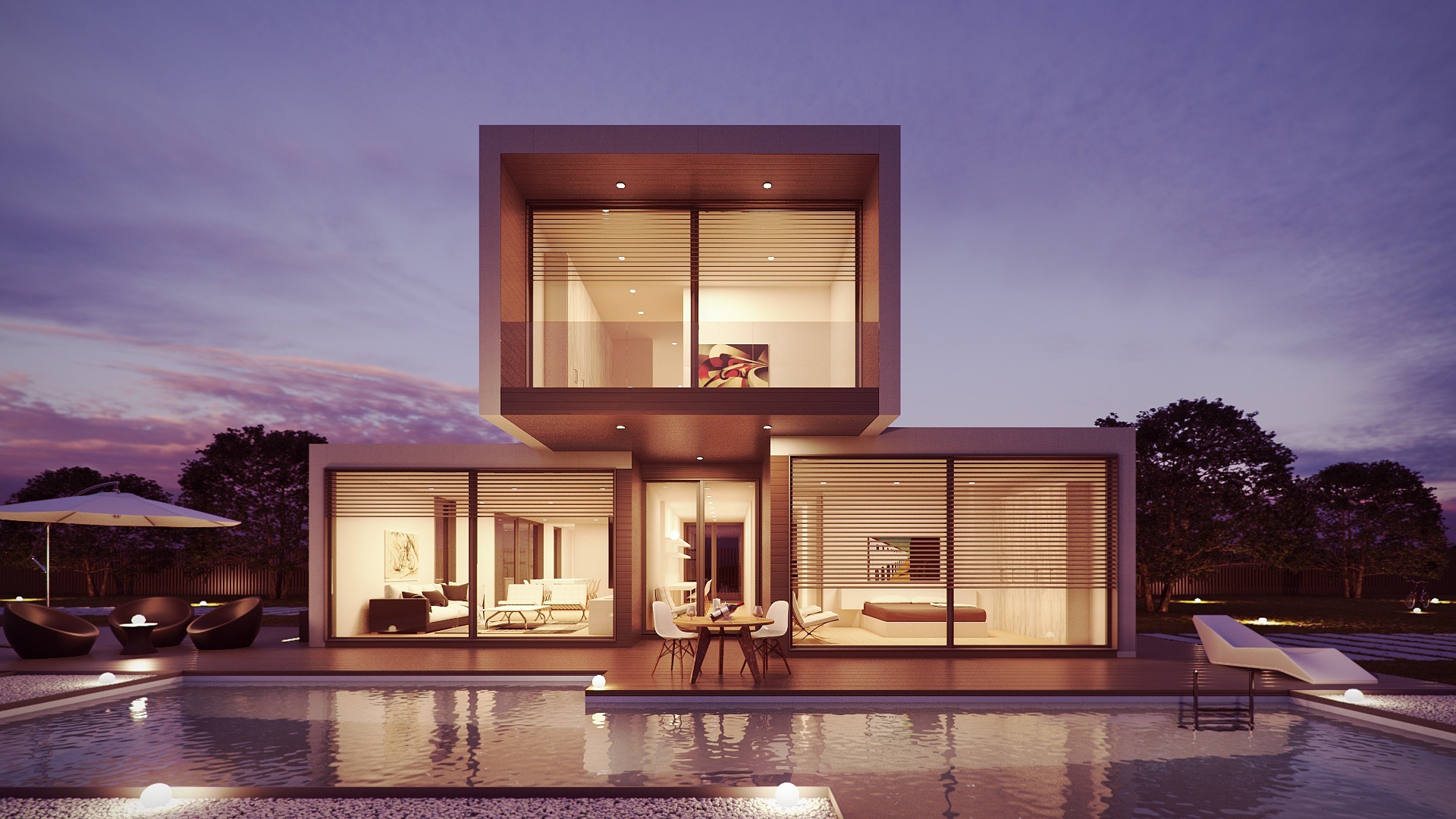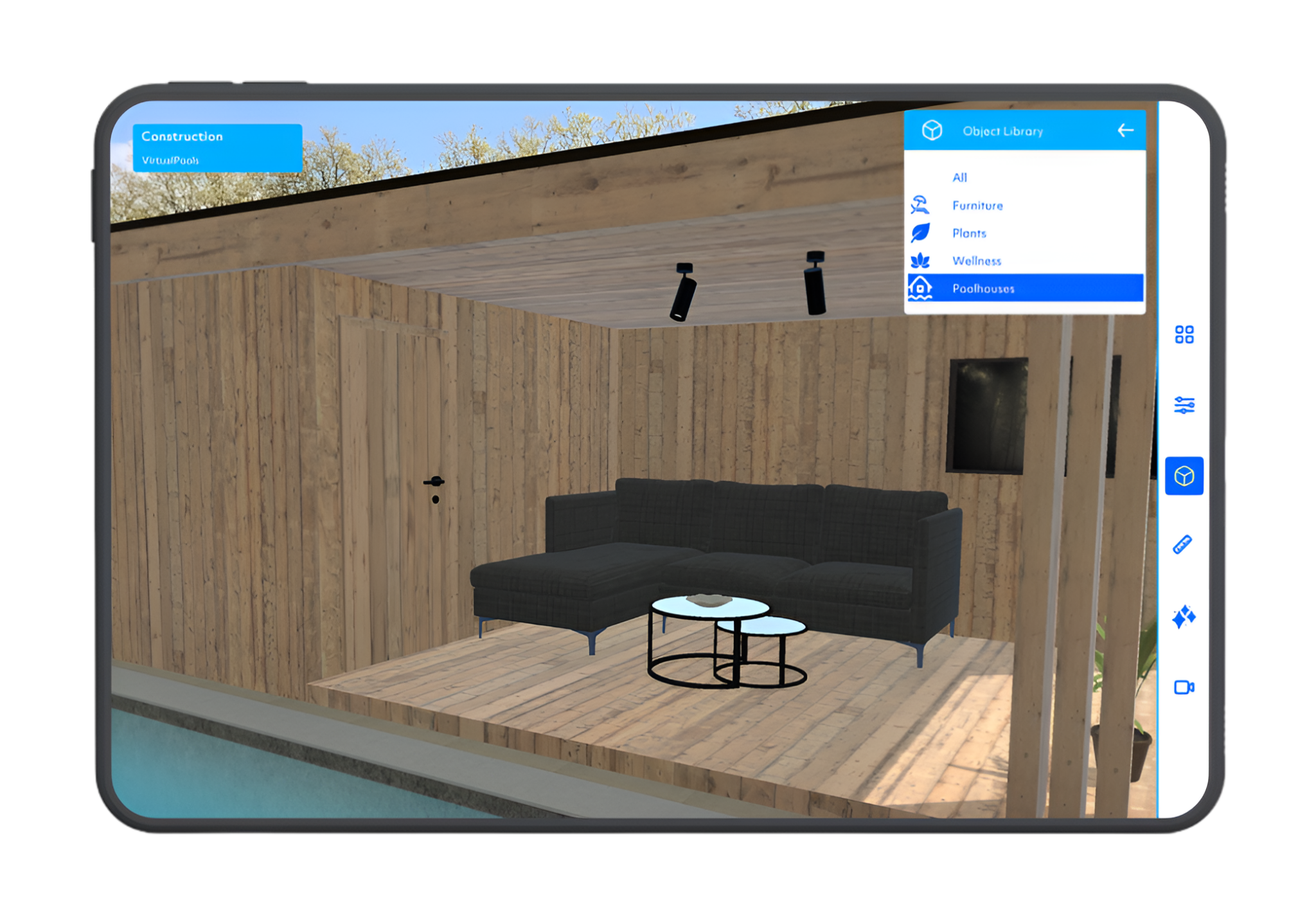In pool installation, visualizing a project before starting construction is critical. Customers want to know exactly how their new pool will look in their space, and they want to make design decisions with confidence. Yet, traditional swimming pool design processes can be slow, static, and prone to errors.
This blog will explore what challenges this industry faces and how to solve them.
Challenges in pool design and sales
Pool installation is a complex, high-stakes industry where precision and client satisfaction are paramount. Traditional methods of designing and selling pools come with numerous challenges that often slow down the process. Let’s break down some of the key issues both pool installers and brands face.
For pools installers
One of the biggest issues for installers is they rely on traditional 3D renders or 2D blueprints for pool designs. 2D blueprints do little to convey the look and feel of the final pool, making it difficult for clients to visualize the final result. 3D renders offer more detail and a clearer visual representation, but they come with their own set of problems.
3D renders are often time-consuming and expensive to produce for such large projects. Every time a client requests a change, installers must order a new render or spend valuable time on revisions. This can lead to frustrating delays that slow down the entire process. Sometimes installers may have to work with external designers or software that isn’t intuitive, causing bottlenecks in the workflow.
The back-and-forth revisions delays approvals and adds unnecessary costs for both the installer and the client. The longer the design phase drags on, the more money goes into updates and extra renderings. These issues can cause friction between the client and installer, potentially leading to a strained relationship or lost business.

Another significant problem is the lack of real-time interaction in traditional design methods. Clients are often unable to fully engage with static images, so they can’t picture the real result.
This lack of involvement can lead to miscommunication between parties, where clients may feel uncertain about the final design.
This process is inefficient for pool installers, leading to longer timelines, higher costs, and reduced client satisfaction. The more time spent on design revisions, the fewer projects an installer can take on, which hinders business growth.
For pool brands
For pool brands, the challenges lie in product visibility and integration. Brands manufacture essential pool components, but they often lack a way to integrate these products into real designs. Instead, products are typically in static product catalogs, detached from the design work that installers are doing with clients.
This disconnection severely limits brand exposure. Installers typically carry catalogs to show samples to their clients, but these static presentations don’t provide context. A pool client might see a piece they like on the catalog, but they may be hesitant to choose it if they can’t see it in a design. This lack of integration reduces the brand’s ability to influence client decisions during the critical design phase.
In addition, brands face difficulties in engaging directly with installers. Installers are often unaware of new products when working with traditional catalogs. Consequently, many brands miss out on project opportunities that could have resulted in sales. This not only impacts immediate sales but also future business development.
These combined challenges create a fragmented process for both installers and brands, limiting their ability to collaborate effectively.
The solution: how VirtualPools tackles these problems
VirtualPools addresses these challenges head-on with its real-time 3D design software. Installers can simplify their design process and brands can increase their product visibility.
For pool installers
VirtualPools empowers pool installers to simplify and speed up the design process significantly. Instead of relying on drawings or expensive outsourced 3D renders, installers can create and modify designs in real time. This capability allows them to sit down with clients and adjust the pool’s dimensions, materials, and surroundings instantly.
This interaction means that clients can see their dream pool come to life before their eyes. VirtualPools creates an engaging experience and enables them to make informed decisions on the spot.
One of the most significant advantages for pool installers is the elimination of costly and lengthy 3D renders. Traditional 3D design workflows involve hiring external designers and then spending weeks refining designs based on client feedback. VirtualPools offers a far more efficient approach, allowing for instant visualization during consultations. This gives clients a clear, accurate understanding of what their final pool will look like.
Moreover, this dynamic, real-time approach helps close deals faster. Clients are more likely to approve projects during the initial consultation, enabling installers to move forward more quickly. This leads to fewer revisions, quicker installations, and greater client satisfaction. This way of working helps installers handle more projects at once, boosting their overall business efficiency and revenue potential.
Another benefit is the ability to design pools with complete accuracy in terms of scale, materials, and layout. Such precision reduces miscommunication between the installer and client, ensuring that the result matches the client’s vision exactly. VirtualPools also has a measurement tool, helping installers calculate material needs and calculate costs upfront.
Lastly, with VirtualPools’ immersive visualizations, installers can differentiate themselves from competitors who still rely on outdated design methods.
For pool brands
Pool brands also benefit significantly from VirtualPools’ platform, as it gives them unparalleled visibility. Traditionally, manufacturers have relied on static product catalogs or showroom displays to promote their products. As an alternative, VirtualPools offers a much more dynamic and impactful way to present products to potential buyers.
When products are in the design catalog, installers use these items in the designs they create for their clients. This means that when an installer uses the platform to create a pool design, they can easily add products from real brands.
This type of immersive product placement significantly enhances visibility. Instead of browsing through static catalogs or websites, clients can see a product as part of a cohesive design. This leads to higher product adoption rates, as clients are more likely to choose products that they have seen in a design.

Additionally, VirtualPools offers brands a unique data-driven advantage. The platform collects valuable insights into which products are most commonly selected or requested by clients. Brands can use this data to understand market trends and customer preferences, allowing them to refine their product offerings. This data is very valuable to develop future products or adjust marketing strategies to target high-performing product lines.
Brands also benefit from strengthened relationships with pool installers. Having their products displayed on the catalog fosters closer collaboration with installers. This creates a mutually beneficial cycle, resulting in more sales for both parties.
Moreover, this integration places brands in a prime decision-making position. When clients are making choices about their design, the brands in the VirtualPools catalog enjoy greater exposure and opportunities.
Why choose VirtualPools?
VirtualPools isn’t just another 3D design tool. It’s a platform designed to step up the pool installation and design process. Here’s a quick rundown of why businesses should consider making the switch:
- Instant visualization: Real-time 3D rendering allows clients to see design changes immediately, speeding up approvals and reducing delays.
- Interaction: Clients can engage with the design process, making decisions in real-time.
- Cost and time efficiency: By removing traditional 3D renders, VirtualPools reduces the cost and time associated with pool design.
- Increased product exposure: Brands can showcase their products directly in the design process, gaining more market exposure.
- User-friendly interface: VirtualPools offers an intuitive interface that allows both installers and clients to create designs effortlessly.
Conclusion: Transforming the pool industry with VirtualPools
The pool industry is evolving, and VirtualPools is at the forefront of this transformation, solving the challenges of this sector. Our platform is making the pool design process more efficient, cost-effective, and engaging for both installers and clients.
It also gives brands new opportunities to showcase their products in a dynamic, contextual setting, leading to more sales. Embrace the future of pool design today with VirtualPools and see how it can step up your business.
